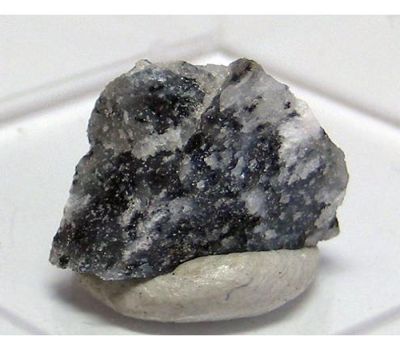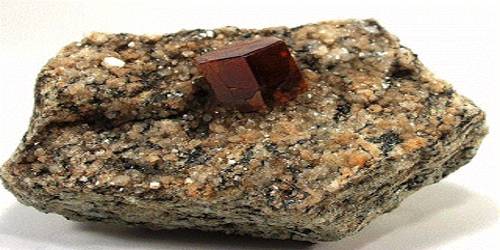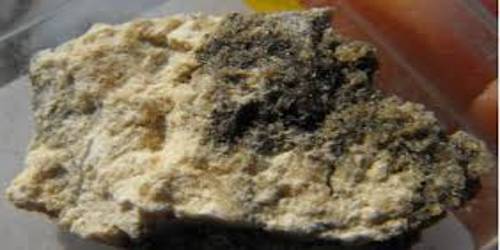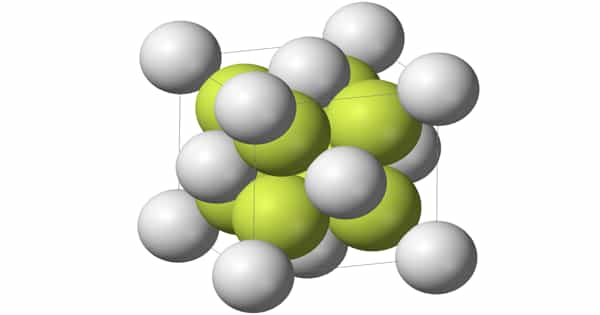Karlite is a silky white to light green orthorhombic borate mineral, not to be confused with tremolite-actinolite. It has a general formula of Mg7(BO3)3(OH)4Cl. It is an orthorhombic-disphenoidal mineral containing aluminum, boron, chlorine, hydrogen, magnesium, and oxygen. This mineral was originally discovered in the Furtschaglkar near the Furtschaglhaus in Austria, but has also been found in Russia and France, and was probably formed during the alpine metamorphism of the Alps.
Karlite is named in honor of Franz Karl (1918–1972), professor of mineralogy and petrography at Christian Albrechts University in Kiel, Germany, for his studies of the geology of the eastern Alps.
General Information
- Category: Borate mineral
- Formula: Mg7(BO3)3(OH)4Cl
- Crystal system: Orthorhombic
- Crystal class: Disphenoidal (222)

Fig: Karlite
Properties
Karlite possesses moderate optical relief, the degree to which the mineral grains stand out from the mounting medium. This mineral is orthorhombic and sphenoidal, exhibiting symmetry on 222. It is not Radioactive.
- Formula mass: 412.74 g/mol
- Crystal habit: Acicular, fibrous, rosette-like and fibrous aggregates
- Cleavage: Perfect on {001}
- Mohs scale hardness: 5.5
- Luster: Silky
- Streak: White
- Diaphaneity: Semitransparent
- Specific gravity: 2.80-2.85
- Optical properties: Biaxial (-)
Occurrence: Probably formed by Alpine metamorphism, in a calcsilicate–carbonate lens in amphibolites (Schlegeistal, Austria).
Karlite is a relatively newly discovered borate mineral occurring in clinohumite-chlorite marble in calcsilicate-carbonate lenses embedded in amphibolite. The amphibole at the original locale is situated between tectonic units “Zentralgneis” and “Schieferhulle”.
Association: Calcite, dolomite, “chlorite”, clinohumite, brucite, ludwigite (Schlegeistal, Austria); sakhaite (Siberia, Russia).
Information Source:
















